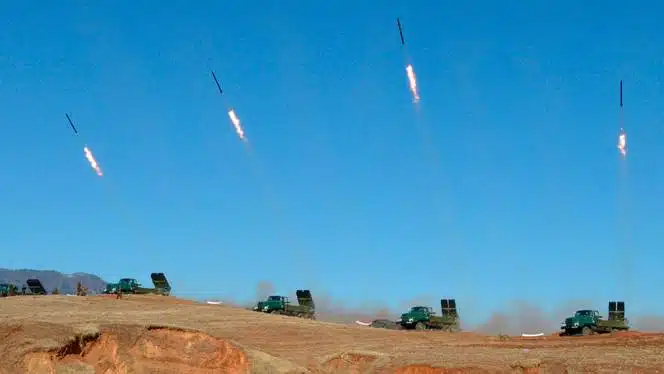As US and South Korean officials met in Seoul, the US denounced the test and expressed concern about growing tensions on the Korean Peninsula.
In what experts believed was a premeditated attempt to draw attention, North Korea has fired several short-range ballistic missiles while US Secretary of State Antony Blinken is in South Korea for negotiations.
Blinken met President Yoon Suk-yeol early on Monday while attending the third Summit for Democracy in Seoul. On the fringes of the event, he is also meeting with his counterpart from South Korea, and it is expected that their talks will center on the allies’ efforts to confront the North Korean nuclear threat.
One of Washington and Seoul’s largest yearly combined military training exercises came to an end last week, sparking irate responses and live-fire drills from nuclear-armed Pyongyang, which denounces all such operations as invasion practice.
The military in Seoul reported that it had seen the firing of “multiple short-range ballistic missiles” early on Monday. The missiles traveled around 300 kilometers before splashing into the East Sea, sometimes referred to as the Sea of Japan.
The Joint Chiefs of Staff said, “We are maintaining the highest level of readiness and are closely sharing relevant information with the US and Japan.”
Blinken, using the official names of North and South Korea, “condemned the launch of ballistic missiles by the DPRK and reaffirmed the United States’ ironclad commitment to the ROK’s security,” Spokesperson Matthew Miller stated following their discussion with Yoon.
According to Yoshimasa Hayashi, the senior government spokesperson for Japan, three short-range ballistic missiles fired by the North landed outside of the nation’s exclusive economic zone (EEZ) without causing any harm.
“Gets more notice.”
The annual Freedom Shield drills between Seoul and Washington, which included twice as many troops this year, came to a close on Thursday, just a few days prior to the launches.
This month, Pyongyang issued a warning, claiming that Seoul and Washington would pay a “dear price” for the drills. It also revealed that Kim Jong-un, the leader of North Korea, had led an artillery unit that it claimed was capable of hitting the capital of South Korea.
Professor Choi Gi-il of military studies at Sangji University told AFP that Pyongyang’s firing of numerous missiles “is a highly calculated move timing-wise to show they are capable of doing such an act even when the top US diplomat is in town.”
Han Kwon-hee of the Korea Association of Defence Industry Studies told AFP that North Korea usually arranges missile launches “as a tit-for-tat” following joint drills between the US and South Korea.
He claimed that the fact that Blinken is there only serves to increase their motivation since it “means more attention from Washington and adds pressure on host Seoul.”
SOURCE: TRTWORLD






